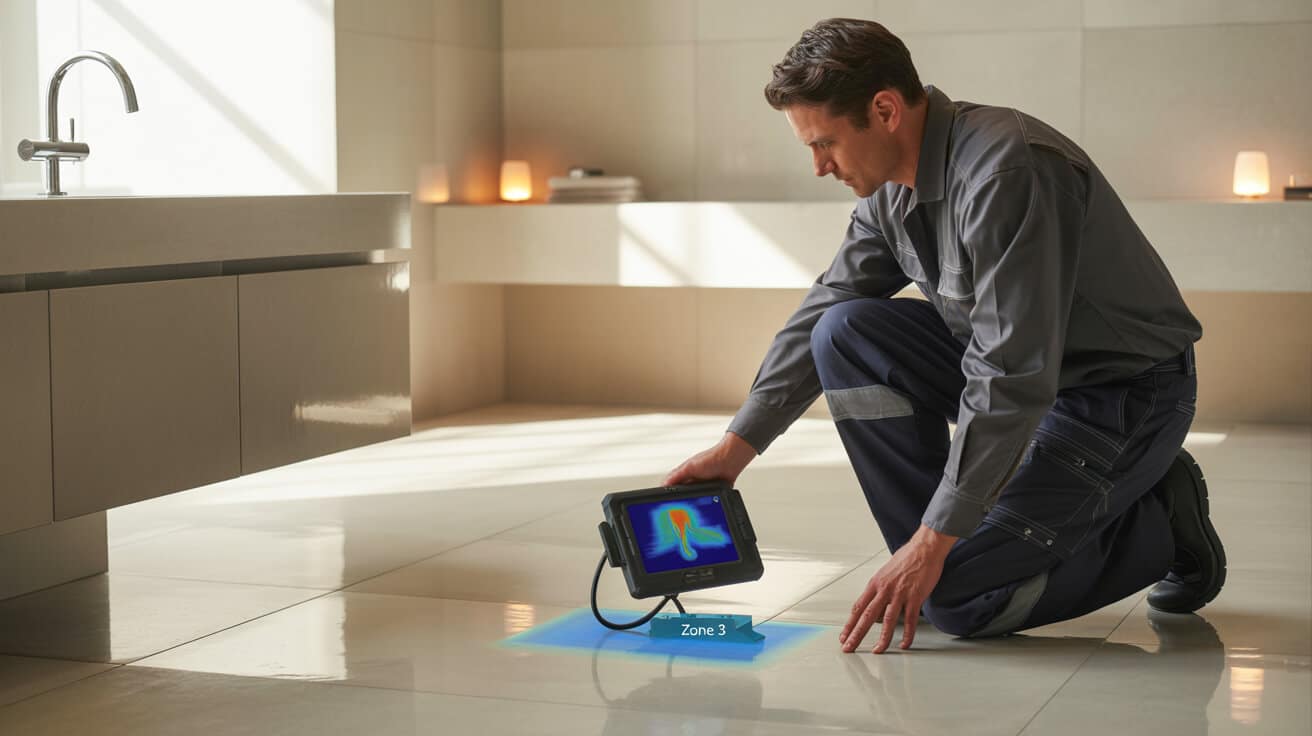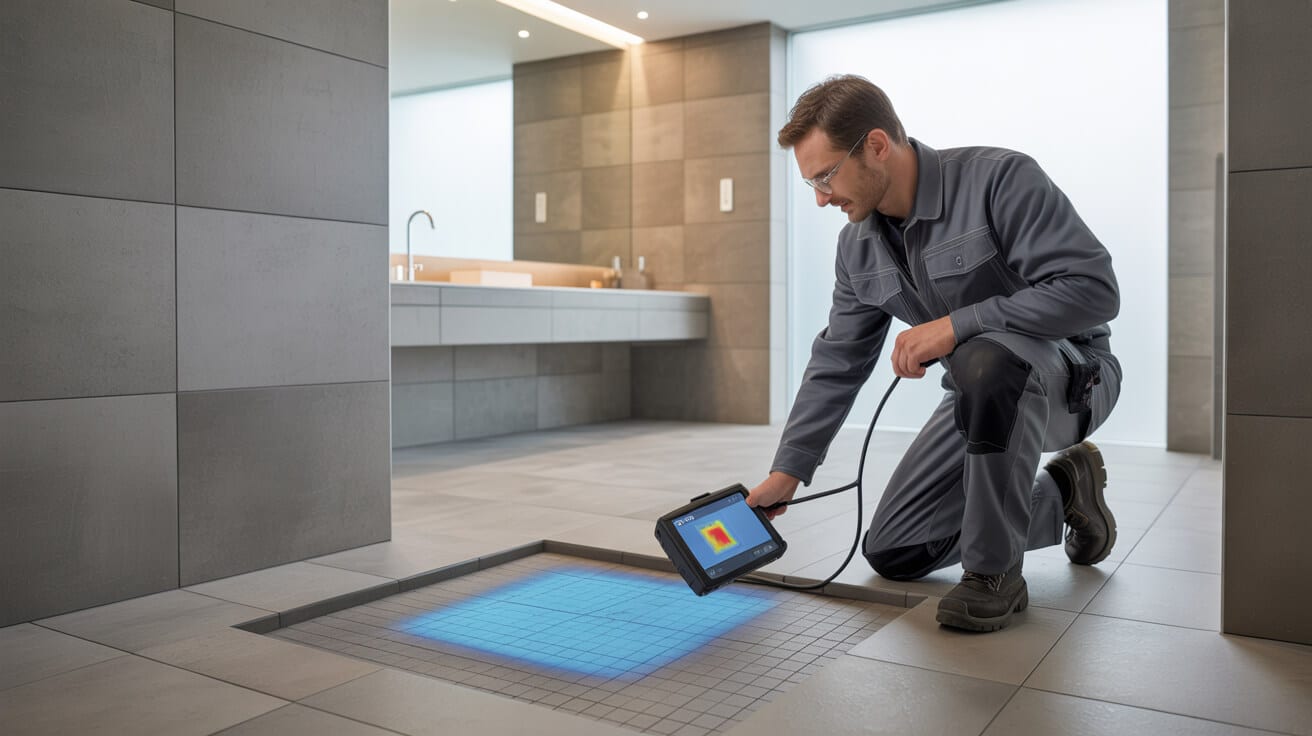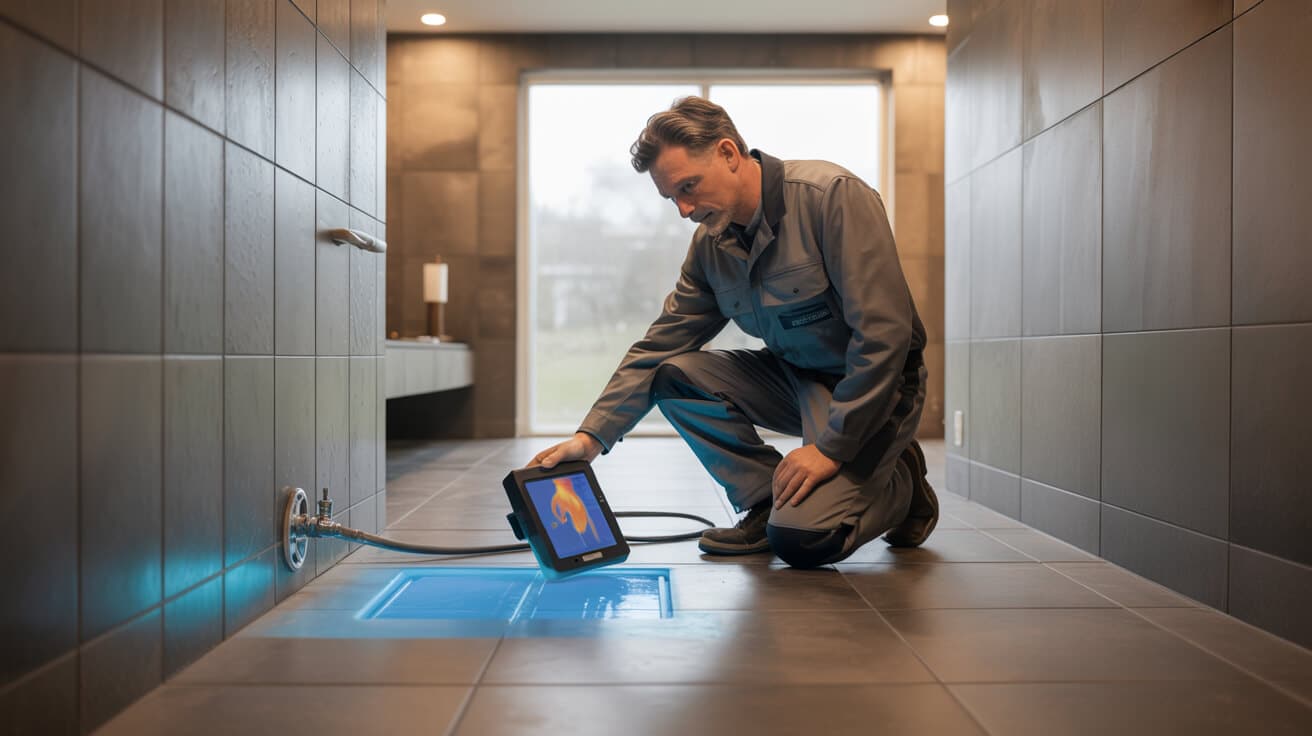Cold zones represent non-uniform floor temperatures during scheduled heating cycles, leading to uneven warmth and possible discomfort. In practice, these patterns emerge as a result of design limitations, component failures, installation inconsistencies, or usage misalignments. The consequences typically include escalated utility bills, customer dissatisfaction, diminished property reputation, and heightened regulatory scrutiny, especially within managed properties or commercial assets.
Etymology or Name Origin
The phrase “underfloor heating” originated from the architectural lexicon, indicating a class of systems designed to deliver radiant warmth beneath the floor surface. The notion of “zones” emerged with the need for compartmentalised temperature control, reflecting innovations in hydronic manifold design and multi-circuit electrical layouts. “Cold zone” is now widely accepted in both technical literature and building codes, denoting a local or systemic region that persistently underperforms relative to setpoint temperature or expected design metrics.
Overview / Context
Types of Underfloor Heating Systems
- Hydronic Systems: Employ networks of water-carrying pipes, insulated below screed or floating floors, connected to a manifold distributing heat from a boiler or heat pump. Loop diameters, spacing, and materials affect heat dispersion.
- Electric Systems: Use resistive heating cables or mats, installed directly under floor finishes. Variants include mesh systems for retrofitting and cable-only layouts for custom designs.
- Zoning and Controls: Zoning allows granular management, with distinct controls per room or area. Sensors monitor ambient and floor temperatures, feeding data to programmable thermostats or smart home systems.
Significance in Property Operation
- Residential Relevance: Consistent floor heat is a core expectation in modern living environments, supporting well-being and perceived property value.
- Rental and Commercial Context: In managed assets or large facilities, cold zones often represent compliance failures, tenant complaints, or contractual liabilities, highlighting the necessity of skilled diagnostics.
History
Origins
Architectural records identify early radiant systems such as Roman hypocausts, where hot air channelled beneath floors provided distributed heat. Historic Korean ondol systems and mediaeval bathhouses further exemplify this approach.
Industrial Emergence
Twentieth-century advances in pipework, synthetic insulation, and electrical safety precipitated the mass adoption of both hydronic and electric variants. By the late 20th century, modular zoning and manifold technology enabled greater comfort control and energy savings, especially in Europe and North America.
Contemporary Evolution
smart thermostats, wireless sensors, and digitally-controlled manifolds now dominate technical discourse. Contemporary systems emphasise zonal independence, rapid diagnosis, and full compliance with efficiency codes. Service providers such as Plumbers 4U contribute to this evolution by deploying advanced diagnostics, leveraging both legacy expertise and cutting-edge technologies.

Concept / Description
Core Components
- Pipework and Cables: The circulatory network—polyethylene (PE-X), cross-linked (XLPE), or conductor-based wiring—delivers energy to targeted zones.
- Manifolds: Hydronic distribution centres with flow gauges, balancing valves, and actuator mounts, centralising loop control.
- Controls and Sensors: Thermostats (manual, programmable, smart), floor and ambient sensors, and wiring centres manage heat output and user interaction.
- Insulation and Substrates: High-quality insulation reduces heat loss and improves upward radiation. Slab, screed, or modular panel designs must align with system mechanics.
System Layouts
- Screed Systems: Common for new builds, embedding pipes or cables in a concrete layer.
- Suspended/Floating Floor: Pipework or cables fixed beneath wooden or engineered board substrates.
- Retrofit/Overlay: Slimline panels designed for upgrading existing spaces with minimal floor height change.
Functionality / Purpose / Applications
Practical Use
- Comfort Management: Uniform heating across rooms or areas, supporting wellness and productivity.
- Energy Optimization: Even distribution enables lower average water temperatures, reducing energy bills.
- Asset Protection: Reduces condensation and moisture-related hazards in both residential and commercial premises; mitigates damp.
- Regulatory Compliance: Properties equipped with properly functioning radiant systems are more likely to satisfy landlord, insurance, and building code requirements.
Domain-Specific Applications
- Residential Housing: Homeowners benefit from consistent heat and silent operation.
- Rental & Social Housing: Landlords maintain tenant satisfaction, avoid complaints, and protect dwelling values.
- Commercial Properties: Office managers and facilities directors ensure compliance, reduce downtime, and achieve energy performance targets.
- Specialist Environments: Medical and hospitality sites depend on comfort and hygiene, with strict standards for floor temperature and air quality.
Classifications / Types / Variants
Hydronic Subtypes
- Single-Zone: Delivers uniform heating through a simple loop circuit, suited to compact areas.
- Multi-Zone: Supports distinct temperature settings and separate programme logic per room or zone.
- High-Output vs. Low-Temperature: System selection and design match floor covering and expected loading.
Electric Subtypes
- Cable-Free Form: Intended for custom patterning in spaces with irregular geometry.
- Mat-Based Installation: Streamlined, ideal for retrofits and time-sensitive projects.
- Self-Regulating Cable: Adjusts power draw dynamically to floor condition, minimising risk of overheating.
Systems / Tools / Methodologies
Diagnostic Equipment
- Thermal Cameras: Visualise surface temperature anomalies.
- Flow Metres and Pressure Gauges: Quantify hydronic performance and identify blockages or airlocks.
- Actuator Testers: Verify electrical and mechanical actuator function.
- Continuity Testers and Endoscopes: Locate cable faults or physical obstructions within concealed loops.
Methodological Approaches
- Stepwise Diagnosis: Sequence of checks from user-reported symptoms through tool-assisted inspection, triangulating the source of uneven heat.
- Balancing and Bleed Protocols: Adjustment of manifold valves and loop purging to ensure uniform flow.
- Smart Monitoring: Data-driven, involving remote sensors, error logs, and programmable controllers to capture trends and predict anomalies.
Table: Typical Diagnostic Tools and Purposes
| Tool | Function | Use Case |
|---|---|---|
| Thermal Camera | Surface temperature mapping | Pinpoint cold patches |
| Flow Metre | Measure hydronic flow per loop | Loop performance |
| Pressure Gauge | System pressure check | Leak or blockage check |
| Actuator Tester | Check actuator/mechanical response | Fault isolation |
| Endoscope | Visual inspect blocked runs | Complex systems |

Stakeholders / Entities Involved
Homeowners
- Experience and report floor comfort issues.
- Responsible for monitoring, basic troubleshooting, and scheduling of professional surveys.
Landlords & Property Managers
- Must respond to tenant reports, organise diagnostics, and commission repairs.
- Obliged to maintain compliance for legal standards and tenancy agreements.
- Document diagnostics and repairs as part of asset management.
Facilities Directors & Commercial Asset Owners
- Supervise or contract system monitoring, service intervals, and inspections.
- Prioritise downtime minimization and cost–benefit alignment with business operations.
- Commission holistic system audits to preserve energy performance certification.
Service Companies & Technicians
- Engineers perform system diagnosis, document findings, and implement solutions.
- Provide asset logs, reporting, and tenant/owner communication.
- Maintain certifications aligned to prevailing regulation.
Legal / Regulatory / Ethical Considerations
Building and Installation Codes
- BS EN 1264: Mandates for design, operation, and measurement in hydronic systems.
- Local Building Regulations: Minimum standards for underfloor heating efficiency and safety.
- Landlord and Rental Statutes: Legal obligations to supply consistent and safe heat in tenanted dwellings.
Manufacturer Warranties and Benchmarking
- System must be commissioned to strict technical requirements.
- benchmark logbooks may be required for warranty or insurance claims.
Ethical Dimensions
- Duty of care obligates managers to resolve comfort-impacting defects.
- Transparency in reporting and engagement of certified professionals, such as those provided by Plumbers 4U, ensures fair, effective remediation aligned with property rights and tenant securities.
Performance Metrics / Data / Measurements
Key Metrics
- Surface Temperature Differential: Ideal is less than 2°C variation across designed zones.
- Flow Rate/Pressure: For hydronic loops, measured in litres per minute; discrepancies signal balancing or blockage problems.
- Heat-Up Time: Excess duration may indicate control or sensor failures.
- Energy Consumption: Analytics track post-repair or maintenance improvement.
Measurement Protocols
- Use of digital logs and error reports to inform periodic reviews.
- Post-intervention retesting validates performance restoration and compliance.
Challenges / Barriers / Limitations
Operational or Technical Issues
- Inaccessible manifolds or buried pipework complicate diagnosis.
- Hybrid and legacy installations can thwart modern control and balancing logic.
Social or Economic Factors
- Tenant churn disrupts maintenance cycles and knowledge transfer.
- Repair or upgrade costs can deter prompt action; preventative contracts or insurance may mitigate.
Philosophical or Policy Objections
- Cost–benefit disputes over partial versus complete remedial interventions.
- Ambiguities in lease agreements regarding maintenance responsibility may delay effective diagnosis.
Impact / Influence / Legacy
Energy and Cost Efficiency
- Diagnosed and resolved cold zones directly reduce energy waste and operating costs.
- Uniform thermal distribution supports green building certifications and favourable EPC scores.
Comfort and Occupant Satisfaction
- Consistent floor heat enhances well-being, supports rental rate optimization, and reduces complaint volumes.
- Transparent documentation by service partners, including Plumbers 4U, bolsters repair trustworthiness and compliance records.
Sector Influence
- Evolving standards in diagnostics, coupled with digital reporting, strengthen the property management ecosystem’s resilience and adaptability.
Future directions, cultural relevance, and design discourse
Automation and Predictive Maintenance
Advances in programmable control, real-time analytics, and self-learning balancing valves forecast a shift toward systems that preemptively resolve cold zones. predictive maintenance service models will increasingly supplement traditional scheduled checks.
Emerging Design Movements
Floor heating systems are being reconceptualized as integrated comfort platforms, interfacing with climate-responsive architectures. Cultural emphasis on sustainability and wellness is reshaping specification and procurement processes.
Regulatory, Rental, and Property Trends
Property markets will continue demanding transparent repair logs and formal diagnostic reporting. Regulatory bodies are expected to refine codes governing verified comfort, energy efficiency, and landlord–tenant obligations. Service companies are aligning with this shift, offering digital maintenance records and user-centric, engagement-driven reporting.

